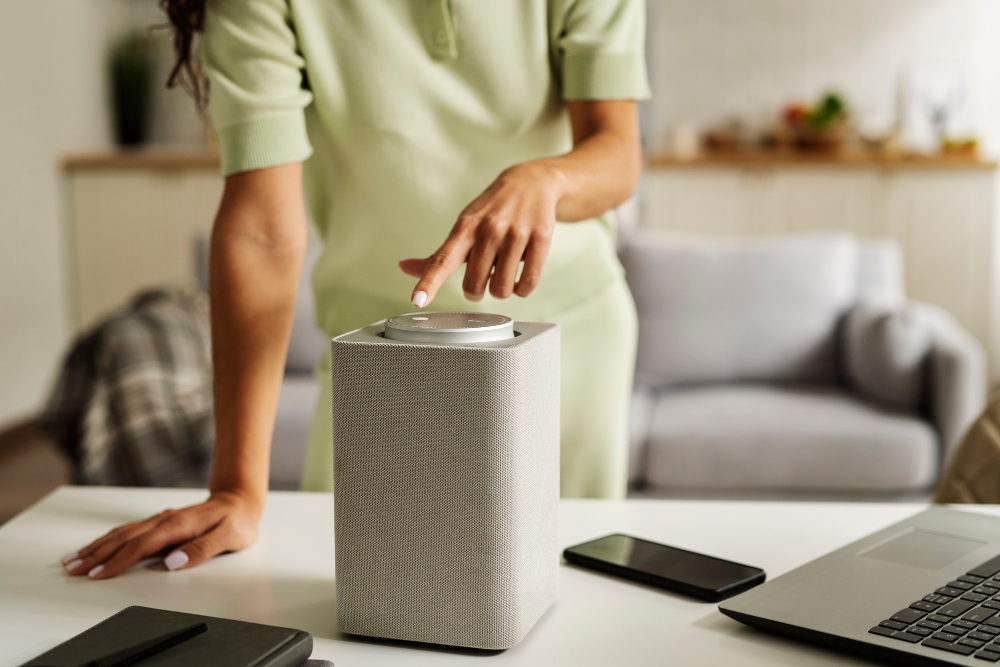The air in your home plays a crucial role in your overall well-being. Poor indoor air quality can lead to allergies, breathing issues, and even long-term health problems. Fortunately, there are simple and effective ways to create a cleaner, healthier environment inside your home. Below are practical tips to help you breathe easier and enjoy fresher air.
1. Use an Air Purifier
Air purifiers are among the most effective tools for enhancing your home’s air quality. These devices work by filtering out harmful particles, such as dust, pollen, and dander. Some advanced models even capture bacteria, viruses, and volatile organic compounds (VOCs).
- Key Benefits:
- Removes allergens, great for those with asthma or allergies
- Reduces odors caused by cooking, pets, or smoke
- Improves sleep quality by circulating cleaner air
Tip: Choose an air purifier that includes a HEPA filter for optimal performance. For larger homes, consider multiple units to maximize coverage. Be sure to replace filters as recommended by the manufacturer to keep your purifier working effectively.
2. Maintain Proper Ventilation
Good ventilation ensures that fresh air flows through your home, diluting indoor pollutants and improving air quality. Without it, particles such as dust and those from cleaning products can accumulate, leading to stagnant, unhealthy air.
- Steps to Improve Ventilation:
- Open windows and doors when weather permits to allow fresh air inside
- Use exhaust fans in kitchens and bathrooms to expel humidity and odors
- Install trickle vents on windows if outdoor air quality is not a concern
Tip: If you live in an area with poor outdoor air quality, be mindful of when you open windows to avoid bringing in pollutants, such as vehicle emissions or smoke.
3. Add Indoor Plants
Indoor plants are not only beautiful but also natural air purifiers. They absorb carbon dioxide and release fresh oxygen, contributing to a healthier indoor atmosphere. Some plants can even reduce toxins like formaldehyde and benzene, which are often found in household products.
- Best Air-Purifying Plants:
- Snake Plant (Mother-in-Law’s Tongue): Requires minimal sunlight and care
- Peace Lily: Known for removing common household toxins
- Spider Plant: Easy to maintain and safe for pets
Tip: Avoid overwatering your plants—excess moisture can lead to mold growth, which can counteract the benefits.
4. Reduce Indoor Pollutants
Many everyday household activities and items can release pollutants into the air. Taking steps to minimize their presence will drastically improve air quality.
- Practical Tips:
- Avoid smoking indoors—tobacco smoke lingers and is filled with harmful chemicals
- Use natural or unscented cleaning products to reduce VOCs
- Test for carbon monoxide and radon, both of which are invisible yet hazardous gases
- Store paints and solvents in sealed containers and ideally outside of living areas
Tip: When purchasing cleaning supplies or home goods, look for those labeled as “low-VOC” or “non-toxic” to keep your indoor air cleaner.
5. Keep Your Home Clean
Dust, pet dander, and mold are some of the most common culprits of poor indoor air quality. Keeping your home clean reduces the buildup of these pollutants.
- Cleaning Practices for Cleaner Air:
- Vacuum carpets and rugs regularly with a vacuum that has a HEPA filter
- Wash bed linens and curtains frequently to remove allergens
- Clean air vents and ducts to prevent dust and debris from circulating
6. Control Humidity Levels
Humidity plays a significant role in air quality. High humidity encourages the growth of mold and dust mites, while low humidity can cause dryness in your skin and respiratory system.
- How to Manage Indoor Humidity:
- Use a dehumidifier to lower humidity in damp areas like basements
- Use a humidifier during dry seasons to maintain a comfortable balance
- Keep indoor humidity levels between 30-50%—using a hygrometer can help you monitor this
Tip: Place a dehumidifier near sources of moisture, such as the laundry area or bathroom, for maximum effect.
7. Replace Household Filters Regularly
Filters in your home’s heating, ventilation, and air conditioning (HVAC) systems can become clogged over time, reducing their ability to filter out dust and pollutants.
- Maintenance Tips:
- Replace HVAC filters every 1-3 months, depending on usage
- Check the refrigerator and vacuum filters, and clean or replace them as needed
- Consider upgrading to high-efficiency filters designed to trap smaller particles
Tip: Set a calendar reminder for filter changes to keep your systems running efficiently and maintain a clean home air quality.
Manageable Steps
Improving the air quality in your home doesn’t require a complete lifestyle overhaul; just a few mindful changes are needed. From investing in an air purifier to incorporating simple habits like regular cleaning and ventilation, there are plenty of manageable steps to create a healthier home environment.
Whether it’s adding a snake plant to your living room or upgrading your HVAC filter, you can enjoy the fresh air and the peace of mind that comes with breathing cleaner, healthier air.


 Facebook
Facebook
 X
X
 Pinterest
Pinterest
 Copy Link
Copy Link



